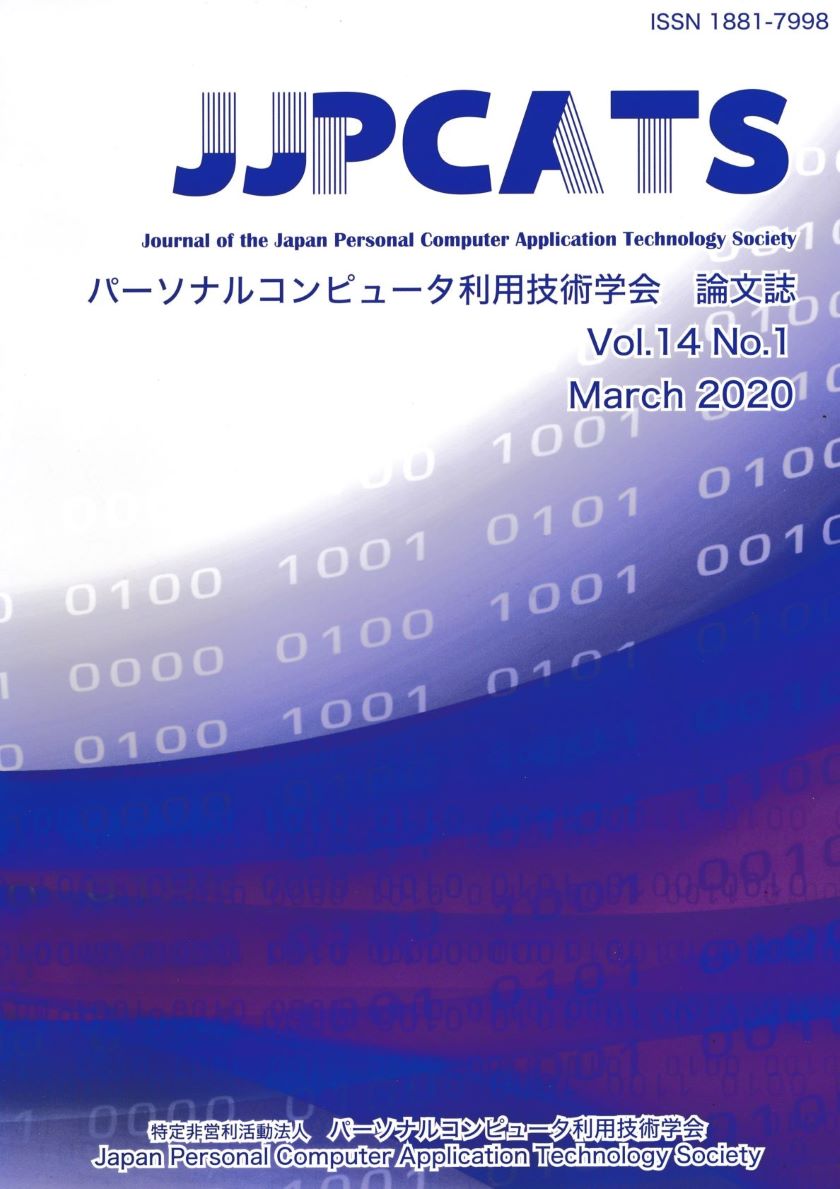Volume 14, Issue 1
Displaying 1-8 of 8 articles from this issue
- |<
- <
- 1
- >
- >|
-
2020Volume 14Issue 1 Pages H1
Published: 2020
Released on J-STAGE: March 16, 2020
Download PDF (179K) -
2020Volume 14Issue 1 Pages T1
Published: 2020
Released on J-STAGE: March 16, 2020
Download PDF (244K) -
2020Volume 14Issue 1 Pages 1-7
Published: 2020
Released on J-STAGE: March 20, 2020
Download PDF (1166K) -
2020Volume 14Issue 1 Pages 8-13
Published: 2020
Released on J-STAGE: March 20, 2020
Download PDF (1069K) -
2020Volume 14Issue 1 Pages 14-21
Published: 2020
Released on J-STAGE: March 20, 2020
Download PDF (1211K) -
2020Volume 14Issue 1 Pages 22-28
Published: 2020
Released on J-STAGE: March 20, 2020
Download PDF (912K) -
2020Volume 14Issue 1 Pages 29-35
Published: 2020
Released on J-STAGE: March 20, 2020
Download PDF (967K) -
2020Volume 14Issue 1 Pages 36-42
Published: 2020
Released on J-STAGE: March 20, 2020
Download PDF (1051K)
- |<
- <
- 1
- >
- >|
